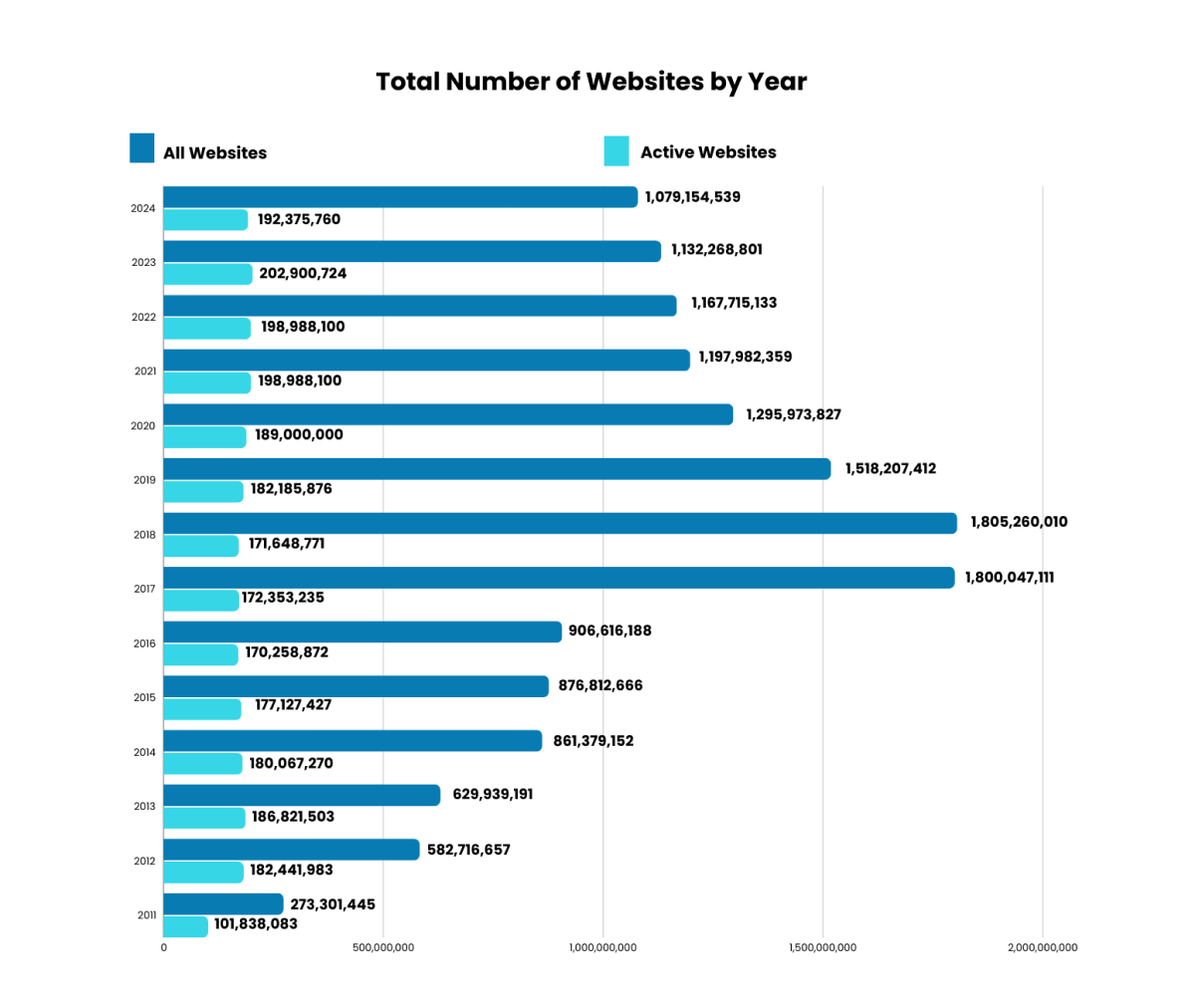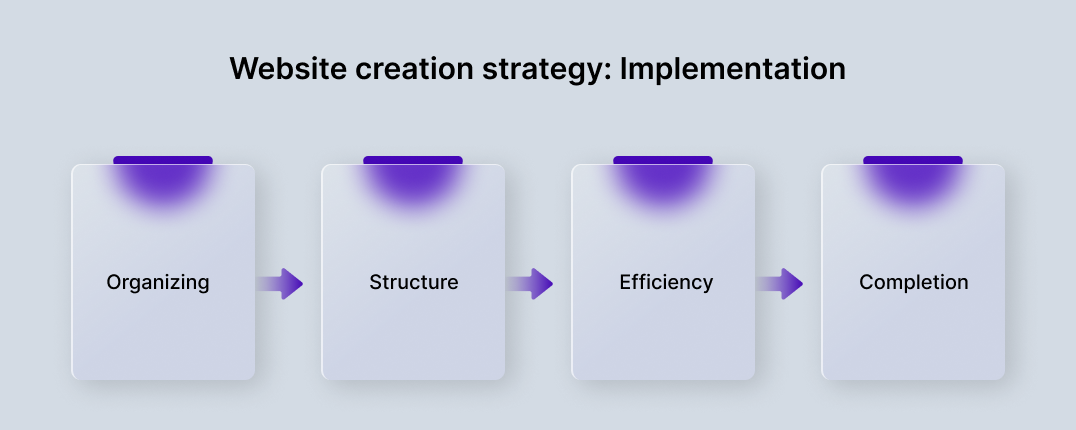2500+
Successful Projects

We wholeheartedly agree that creating a project plan is the first step in any excellent website-building process. Building a website is similar to building a structure. It will only live up to expectations if you start with a strong foundation and architectural designs before people start using it.
Many developers need to be made aware of the components of a project plan for developing a website. As the top e-commerce website development company in India, we will outline the essential procedures for organizing and completing web development projects in this post.
Table of Contents
First, let's delve into the enlightening world of web development planning and understand its significance!
The majority of you are probably familiar with the acronym PLAN. In a web development project, those who aren't often stand for:
Get ready by identifying your website's aims, target audience, and core and secondary objectives.
Landscape: In your opinion, how should the website function? More specifically, what features are you looking for on your website?
Aesthetics: What kind of design do you want for your website? Choose the artwork and color scheme that best serves your artistic objectives.
Navigating: Consider what will make your visitors' browsing effortless and enjoyable.
More than 60% of small and medium-sized companies annually spend money building and constructing a website. Yet, many of these enterprises fail to turn a profit or create value because of subpar functionality, poor design, and poor performance. This information comes from research published by Cision PR Newswire. Do you need further details? Here it is:

73% of mobile internet users have encountered websites that are wholly unresponsive or load very slowly. The most fundamental component of website design development, the homepage's call to action (CTA), is absent from 70% of commercial websites.
But well, what do you know? With careful project management and preparation throughout the website-building process, problems such as these may be totally avoided. Developers may create websites that please users and provide exceptional experiences using a website development project plan.
Now that we know how crucial a web development strategy is for a company website let's examine the procedures that go into creating one. However, first ensure that these three elements are present:
Project managers play a pivotal role in ensuring the project moves forward at the predetermined speed and serve as crucial liaisons between team members. A development team leader is a necessity for every project involving website development. Employing a full-time project manager is the best option if your company is doing well enough. You may also ask a current team member to take the lead.
Before embarking on the website development plan, a robust platform can empower your project manager and development team in laying down a strong foundation for your website by providing them with the right tools to sketch out the milestones, essential deliverables, and responsibilities. It will also maintain the current and allow you to monitor your progress periodically.
Consider carefully whether platform features are appropriate for your web development team.

For those unaware, a web development project may be better organized to achieve maximum performance by following a set of principles and practices known as project management methodology. XP and PRINCE2 are two well-liked project management techniques for creating websites.
When your website development team begins working on scheduled projects, teach them the selected management approach. Explain it in your project management platform!
Have you addressed the issues mentioned above? If so, that's fantastic! It's time to implement your website development strategy.
The stages involved in carrying out the website programming process are as follows:
Plan to accomplish site objectives with your customer and make the most use of development resources and time. Request that your client provide the most precise definition of what consumers want. Pose inquiries like:
Once you have the answers to these questions, put them in writing. They will assist you in defining the objectives and parameters of your website development project.
The next step is to talk with your project team about your client's website specifications. This stage is crucial because it will enable you to convert the client's needs into an impenetrable website project plan.
Once you have the answers to these critical questions, you can create a basic project plan detailing the steps in developing a website and when they will be completed. Talk about it with your customer and bide your time for acceptance.
Proceed to the following stage as soon as your customer provides the all-clear!
The most crucial stage of every website development project is the construction phase. This is the phase in which your team and you will provide the items your customer has always desired. This is the section where your customer's website will be implemented. Using the data that has been acquired so far, you may decide on the site's design, functionality, content, and layout.
In addition to making the website seem appealing, strong branding, organization, and layout will enable users to relate to the brand and grasp the website's main point. In order words, you will organize and lay the groundwork for creating your website.
Imagine seeing an 11 x 14 canvas with nothing on it when you visit an exhibition of paintings. You may experience confusion and rage simultaneously. If you offer a website with no content, your customers will respond in the same way.
Assemble all the information required for the webpage. During this stage of your web development project, you will be working on the following aspects:
Determine what material is required for FAQs, privacy policies, conditions of use, testimonials, and web pages.
Edit and polish content: Some customers provide their text and images, leaving the web design and development business to handle the organization of the material.
The most crucial stage of your web development project is about to begin. Plan, design, and construct the website pages after determining the client's branding, infrastructure, layout, and content. During this stage, the following significant events will take place:
We advise holding frequent team meetings while the project is being built. This will help your management and website development staff stay on top of all the discussions.

Alan Perlis says that optimization stifles revolution. Following the design and construction phases, website optimization is crucial since it may make users feel lucky when they visit your client's website. Put another way, visitors to your client's website who are looking for a response to a query will use several platforms to locate the solution to their issue.
Your website development team will design and execute this step, which includes optimizing pictures, activating gzip compression, increasing cross-browse speed, and minifying scripts and CSS.
If you need help with how to enhance the website's functionality, we recommend looking through many online checklists for optimizing for optimizing website speed. If necessary, optimize assignments for the appropriate team member.
You may have guessed from the header what the subject of our next stage in the website development project plan would be! Necessary actions will be conducted from start to finish in order to finish the client's web project during the finalization. It isn't straightforward and includes the following stages:
Your web development team will validate the website's functioning during the first testing phase to ensure it satisfies the client's needs. Specific tests could be run based on his criteria. The following are a few known tasks completed during the phase:
Have you finished testing and debugging websites? Fantastic! Now it's time to get the client's support systems and website up and running—that is, it's time to go live.
The following tasks will be scheduled and carried out at this stage of the website development project:
As you carefully read the previous sentence, you will see that we discussed preparing the client team to develop and maintain the website. That's the main idea behind this point. There may be website issues in the future. A program for the training and development of your personnel will improve your team's overall well-being and ability to handle those areas of weakness in all facets of their work.
Educate those who will oversee the website when it launches. This applies not just to your employees but also to your client's team members.
We have explained every critical stage in the project strategy for developing a website to you. Creating a plan is essential for your client's company website since it will enable you and your team to ensure the final product is completed correctly.